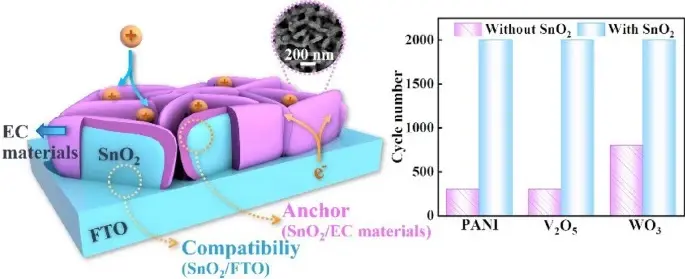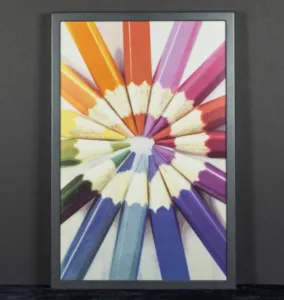A out of Tsinghua University, and funded by the National Natural Science Foundation of China, has demonstrated potential for electrochromic devices (ECDs), bringing them closer to fulfilling a wide array of vivid color variations and prolonged cycling capabilities.

ECDs can change their optical properties like transparency and color when an electrical voltage is applied. These have been useful for smart windows and displays. Recently, there’s a growing interest in devices that can modulate infrared (IR) light for uses like energy-saving buildings, personal temperature management, and spacecraft temperature control. Ynvisible develops e-paper electrochromic displays because they use very little energy, maintain an image for sever hours, are cost-effective, and can be printed with a high degree of customization at competitive prices.
Researchers unveiled a novel strategy involving a highly porous tin oxide (SnO2) nanosheet scaffold. This scaffold, when placed between the electrochromic materials and the conducting substrates, showcases an enhanced electrochromic performance, notably with materials such as polyalanine (PANI), vanadium pentoxide (V2O5), and tungsten trioxide (WO3).
Current electrochromic materials using PANI and V2O5 have faced challenges due to their limited adhesion to substrates. This has resulted in reduced cycling stability and a restricted color spectrum. However, the integration of the SnO2 nanosheet scaffold amplifies the electrochemical active region and facilitates better ion diffusion, thus optimizing the ECDs’ performance.
In practical terms, the incorporation of the SnO2 scaffold heightened the color shifts in composite electrode V2O5 and enhanced the optical modulation of WO3 by 16%. For context, WO3 and V2O5 with the SnO2 lasted for over 2,000 cycles. In contrast, without the SnO2, they only endured about 300 and 1,300 cycles respectively. This augmentation is particularly noteworthy for applications that demand frequent cycling, such as smart windows or advanced electronic displays.
Despite these advances, the research did indicate one potential area for improvement: the switching time during the coloration phase was longer than ideal. However, the study’s overall results largely overshadowed this, pointing to the SnO2 scaffold’s potential to have significance in providing performance and longevity of future ECDs.
Reference
Bian, C., Wang, J., Liu, H. et al. Complementary multicolor electrochromic devices with excellent stability based on porous tin oxide nanosheet scaffold. Nano Res. (2023). https://doi.org/10.1007/s12274-023-6103-2

